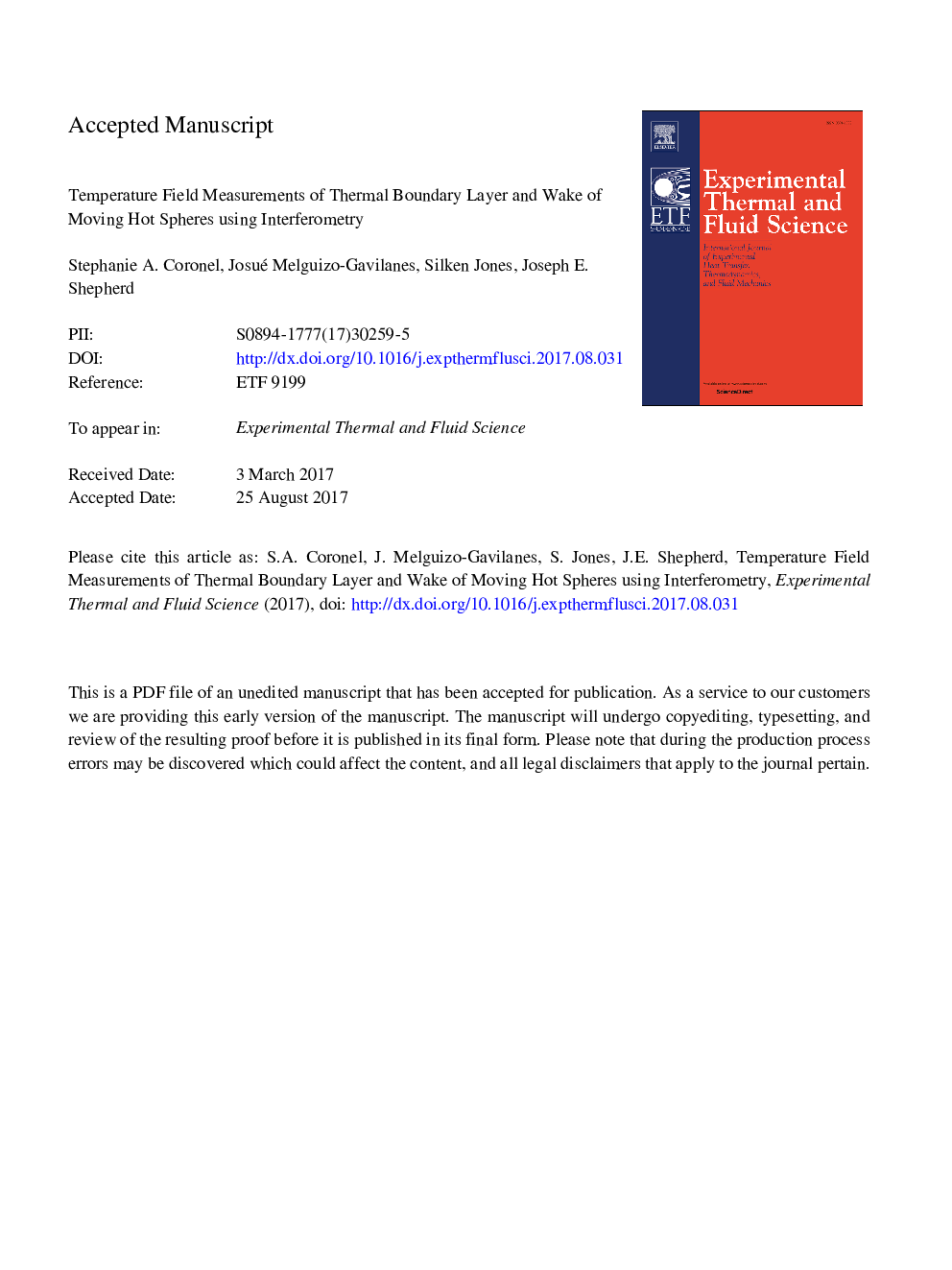| Article ID | Journal | Published Year | Pages | File Type |
|---|---|---|---|---|
| 4992426 | Experimental Thermal and Fluid Science | 2018 | 28 Pages |
Abstract
The methodology used to post-process a raw interferogram of a hot moving sphere falling in an inert nitrogen environment is presented. The steps taken to obtain the temperature field around the hot sphere are explained in detail. These are: (1) noise removal; (2) phase demodulation; (3) phase unwrapping; (4) bias removal; and (5) Abel transform inversion. All the typical features of the flow are revealed such as growth of the thermal boundary layer, shallower temperature gradients were the flow separates, and a hot wake in the recirculation zone. For validation of the methodology, the temperature field is compared against numerical simulations and found to be in excellent qualitative and quantitative agreement all around except at the front and rear stagnation points. The difficulties encountered with resolving these regions are discussed. Overall, interferometry is found to be an excellent tool for resolving thermal flows, including thin regions, such as thermal boundary layers.
Related Topics
Physical Sciences and Engineering
Chemical Engineering
Fluid Flow and Transfer Processes
Authors
Stephanie A. Coronel, Josué Melguizo-Gavilanes, Silken Jones, Joseph E. Shepherd,
